I recently came across a problem in my daily experiences in Taiwan.. Me and a friend had discovered a swimming pool here in Taipei. Having gone swimming at another location, I had discovered that Taiwanese swimming pools require people to buy goggles and swimming caps. And that these are requirements for swimming. So I had availed myself the opportunity, bought myself a set of these and gone ahead with swimming at my old pool without incident or complaint. An interesting thing about this old pool was that there was a camera in the men’s changing room. When I inquired why the staff were recording men changing, the staff assured me that the camera in the change room was a fake intended to deter thieves from stealing. I fear that they underestimate the intelligence of thieves and perhaps also fail to recognize that perhaps the patrons also are uncomfortable being recorded changing.
The new pool location was different, however. There were no cameras in the change room. However there was an incident. The first time I entered the pool area I suddenly had a suspicion that I had done something wrong. The lifeguard’s eyes locked on me and gave me one of those long stares, following me as I entered the pool. This was accompanied by that body language so common in our global communities. The one showing that hesitant forward motion. That little subtle movement that universally indicates a desire to say something or take action. Alas, most likely a combination of nervouseness and the preceived difficulties of communicating with a foreigner (who he most likely assumed could not speak any Chinese) led him to remain silent and disengaged.
As it turned out I was supposed to meet my friend at the pool. But becoming exasperated by his regular tardiness, I decided to enter the pool without him. He joined me later. As he entered the pool, he waved to me and thus signaled that we knew each other. Being a native Taiwanese and previously having some acquaintanceship from a prior visit, the life guard engaged him in conversation.
I had a suspicion that I knew the subject of the conversation and, a few minutes later, when my friend joined me in the pool, I was not disappointed. There were two problems as my friend told me. The first was that I had walked into the swimming pool area with slippers. The lifeguard had made the assumption that they were dirty, not knowing or considering that they were washed and indoor slippers that I use to avoid getting athlete’s foot or other related infections that are so common in our public gyms and pools. The lifeguard of-course also wore slippers in the pool – but let’s leave that nugget aside.
The second problem was my swimming trunks. What, you ask was the problem with my swimming trunks according to the life guard?
- They were not for swimming and looked like boxer shorts or underwear
- The ‘boxer shorts’ absorb too much water in the pool
- They could expose my genitals to other swimmers
- They allowed hair to get into the pool
- They were not streamlined for swimming
I must add a caution to this list. For it was relayed to me via my friend. Unfortunately the life guard did not seem willing to talk to me directly.
For reference, I’ve attached a picture of my swimming trunks. As you can see they are standard swimming trunks. The kind that are available in most stores, for men.
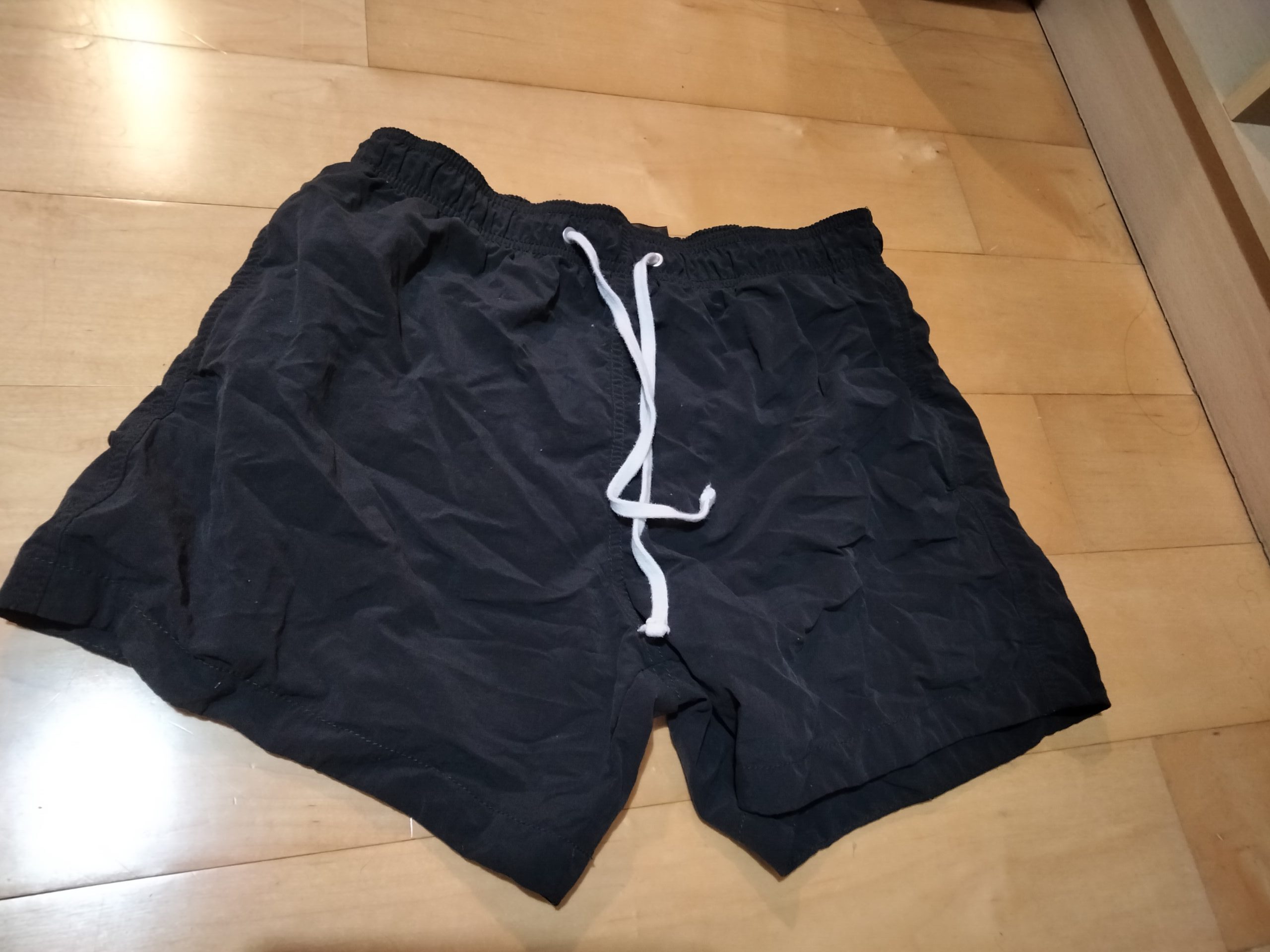
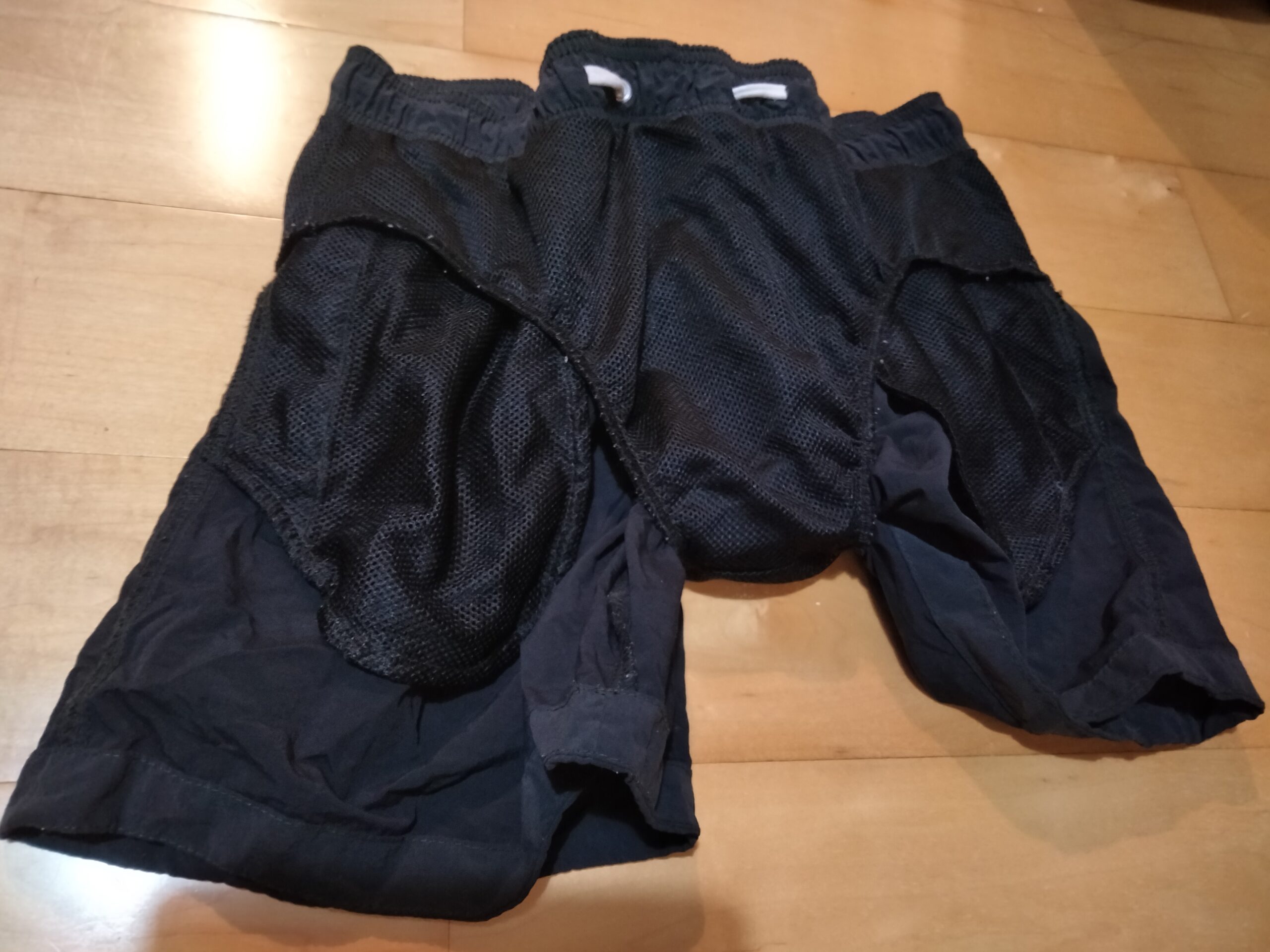
I was annoyed and somewhat insulted by the approach to communication and the subsequent somewhat nonsensical categorization of my swimwear as not swimwear. As such, after the incident, I checked and verified that these swimming trunks were classified as swimwear. I went to H&M (a very popular multinational chain store with a number of stores across Taipei) and went to the men’s swimwear section. Here I discovered two types of swimwear – and only two types. Surprising considering this was one of the mega-store varieties of H&M with a ridiculous number of floors of clothing (I think 7 or 8 floors). See the pictures below.
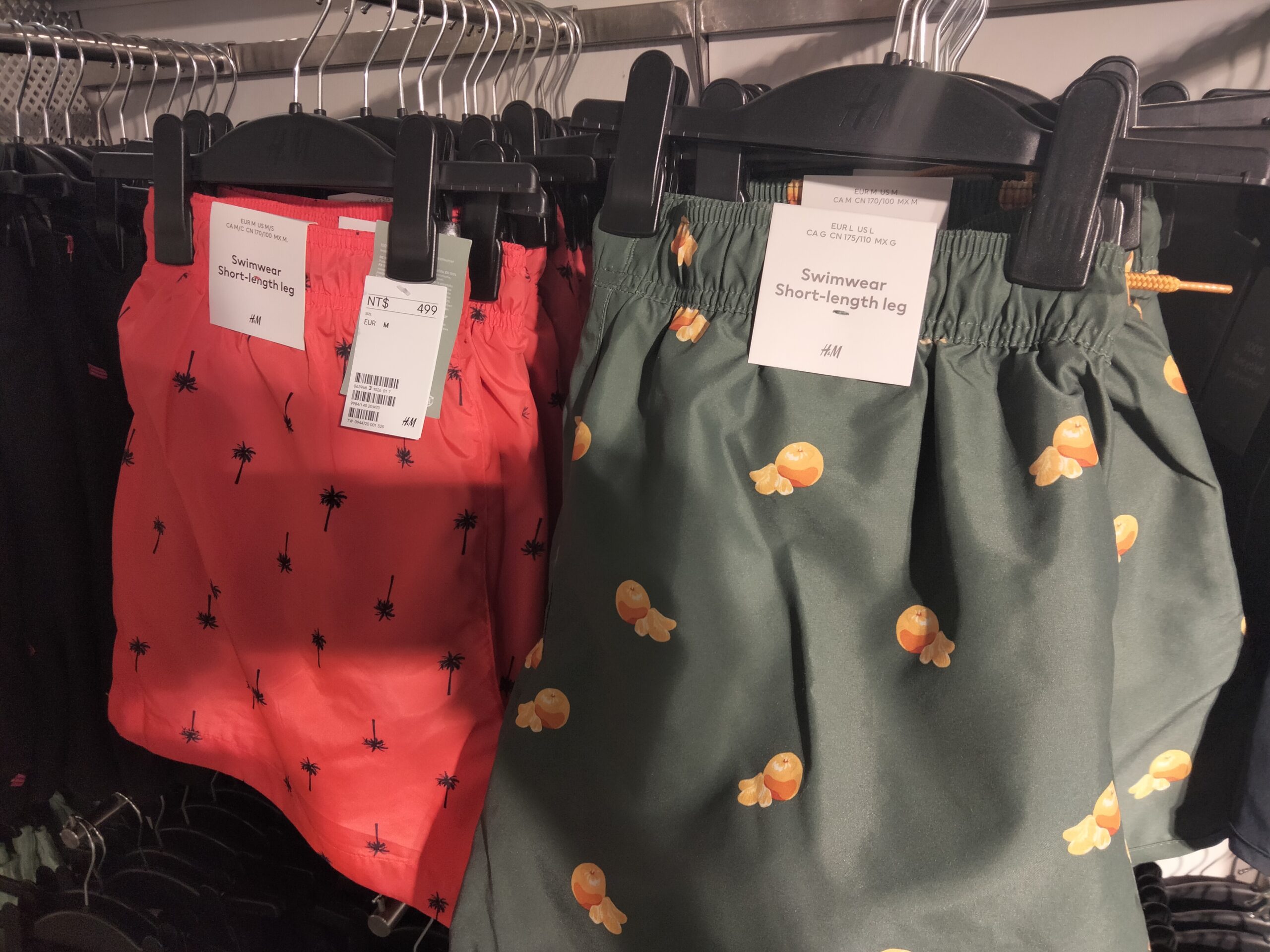
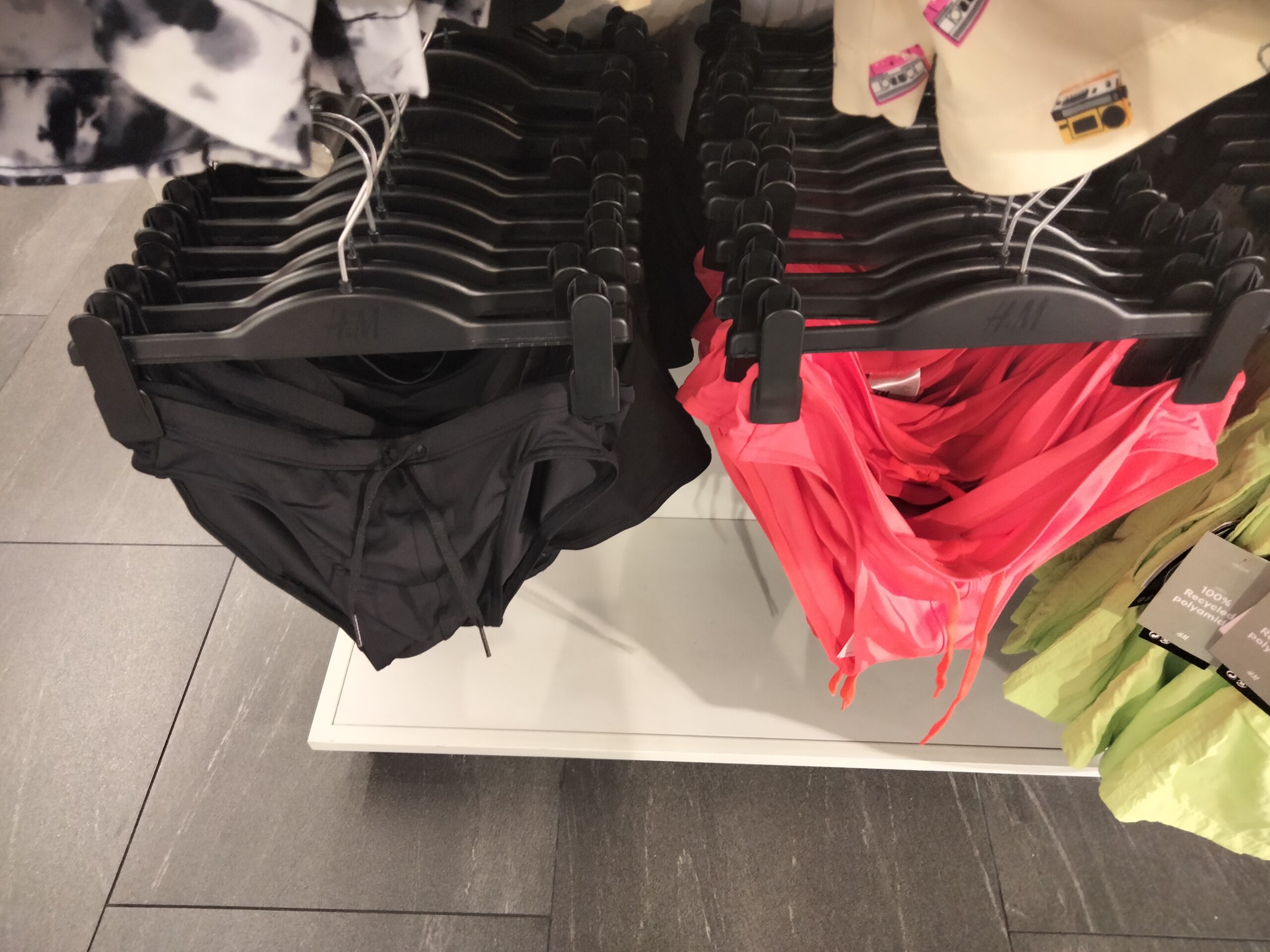
Returning to the story. Mid way during that first swimming session at the new pool, my friend went up to the lifeguard and explained the situation. The lifeguard eventually accepted. His response was that he had life-guarded in pools where foreigners had frequented. He noticed that in these spaces foreigners don’t really care if others wear swimming trunks. Swimming trunks like mine.
With that, I assumed that the story was settled. And so the next time I came for swimming, I once again wore the same trunks. During this second swimming session all went well. It was at this stage, as three of us wrapped up, and were ready to leave that the receptionist stopped us. She proceeded to explain that the shorts I had worn were not swimwear and that I could not swim with underwear in the swimming pool. I’m not sure how she even knew I was wearing the trunks. I’m assuming the life guard had relayed this information. She further noted that the trunks I was wearing would absorb too much water in the swimming pool. Finally she re-iterated that the swimming trunks would reveal my genitals to people that were swimming behind me and thus were not appropriate.
I explained to them that my trunks were not underwear and were actual swimwear. I proceed to show them the inside lining that prevents my genitals from being exposed and showed them that the swimming trunks were made from a water resistant material. They then explained that these swimming trunks were OK for swimming in the sea but not for swimming in pools. I then asked for an explanation of why this was the case. The result? They admitted that they had no good reasons. Those were the rules and that was that. I would not be able to swim in the pool if I didn’t have a Taiwanese swimming suit. The picture below shows a Taiwanese swimming suit that I ended up purchasing.
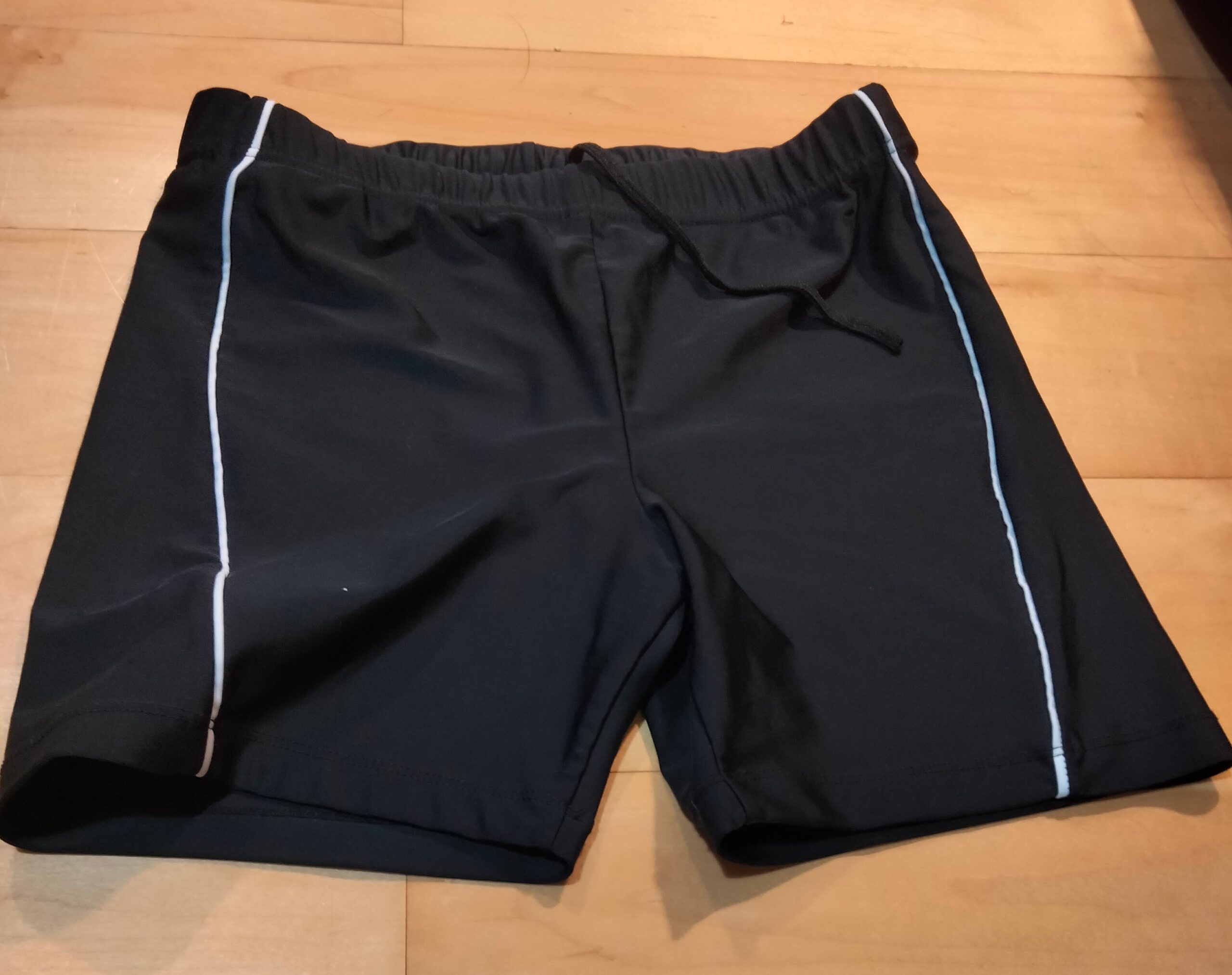
So What’s the Problem?
I have a number of problems with this approach. And feel that I was not in the wrong. Here’s my take on things:
- Perhaps rules without good reasons should be revised. If none of the people involved can come up with a good reason for the rule, should it exist? Certainly there are some rules for which the reason may be rooted in deep statistical arguments that are not easy to grasp for individuals on the ground. I propose, however, that swimming is not one of those environments in which a particular swimwear has some researched statistically significant negative impact on safety, health or such.
- Exposure of genitals is greater with the Taiwanese swimming suit. In fact, I felt highly uncomfortable wearing spandex-like tight swim shorts as they expose my genitals much more than swimming trunks. Further, the tight shorts chafe against my thigh hairs making it uncomfortable to swim. The irony is that as someone who has cultural roots in modest dressing, I find myself forced to expose my genitals because of a rule insisting that I wear overly tight pants. Note: I actually am OK with wearing these tight clothes, though they are uncomfortable. However, there are many people from Indonesia working in Taiwan who might feel violated by being forced to wear ‘less exposed’ tight costumes to obey the rule of modesty.
- How exactly do Taiwanese swimsuits prevent hair from falling into the pool? The reality is that as a man of non-East-Asian descent, I’m covered with hair. The only way to limit hair from entering the pool would be to force me to wear a full body wet-suit in addition to the swimming cap.
- Swimwear does not look like underwear. Much of the problem, most likely, lies from childhood experiences and the deep seated childhood perceptions of the Taiwanese staff. I have yet to encounter a guy wearing such a large and fluffy underwear made of polyester of the size of my swimsuit. Perhaps in Taiwanese society men love to wear boxer shorts as underwear or sleep wear. However, the abundance of swimming trunks in stores around Taiwan (with clear labeling as swimwear) perhaps suggests that the culture can clearly distinguish and recognize the difference between boxers and swimsuits.
- Swimming trunks are only for the sea and tight swimming shorts are for the swimming pool – my question is why? Is there any functional or safety reason for this when it comes to recreational or non-competitive sports? In fact, I would argue that the looser swimming trunks are probably more dangerous in the sea as they are more likely to drag and little help is there to save you if you are struggling to return to shore.
- The lifeguard was wearing the exact same style of swimming trunks! Though it was red so it probably didn’t count. I also didn’t get a good look at the inside lining. At some point he will have to jump into the pool to save someone while wearing those loose swimming trunks. Adding to this I saw other repeat visitors wearing even more revealing tight panty-like swimming trunks (see my earlier H&M picture of the sexy swimsuit for men), while others (albeit girls) were wearing frilly skirts type swimsuits.. Why are these not problems for the staff?
Ultimately, what this comes down to is the argument that I just have to follow the rules. And “its fine, but it looks like underwear so its not acceptable” – a superficial argument and clearly not even true within the Taiwanese cultural environment – evidenced by the plethora of stores selling swimming trunks as swimwear. My suspicion is that this rule is inherited from childhood from school days where the swimming instructor imposed a standard uniform on all students. And student’s, after growing up, just replicated their childhood environment without ever giving it any serious thought.
Conclusion
Taiwan is at a cross-roads. It appears international and friendly to outsiders visiting for a few days or weeks. But, embedded in the culture is a deep sense of tradition that is sometimes hostile (without good reason) to the international community that has made Taiwan its home. Sometimes tradition is worth preserving. But at other times, it is a tool without a purpose imposed by the older rule making generation without considerations for cultural differences, international sensitivity, or changes in youth culture. This older generation, should perhaps, consider why they are doing what they are doing and whether it really makes sense. This is especially important, as Taiwan is increasingly relying on a large Indonesian and Filipino community to do its factory work and take care of its older generation as population declines. Perhaps a little respect is in order for this cultural heritage as it is in some ways an intrinsic part of this society’s functioning. As a South Asian, my cultural roots are similar in some ways to Indonesian roots so I can sympathize.
In the future, I will explore this conversation further by taking to the streets and asking people what their conception of swimwear is. So look out for my future article on this topic. Ummm … unless I get lazy and don’t do it. But. Hey. What ya gonna do?
